Come for the weekend and not freeze in a cold house: how to organize heating in the country?
You are viewing the section In a private house, located in the large section Heating.
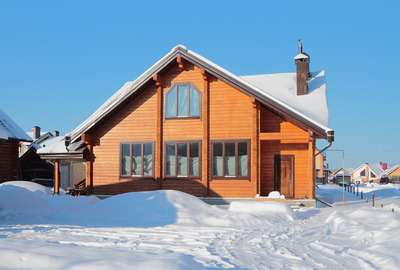
The dacha is seen primarily as place for summer vacation.
But in the middle zone at the end of spring and beginning of autumn the nights are quite cold, but it's always nice to spend time outside the city.
If the house is heated, you won't have to leave in the evening. In addition, you will have the opportunity to arrive at the dacha on time. long winter holidays.
The most common heating options in the country
Heating system more convenient to install at the construction stage houses. But installation is also possible in an already built house.
Water
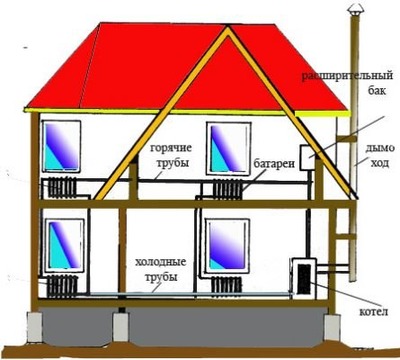
Water accumulates and releases heat well. Therefore, the water heating complex is one of the most common for the dacha.
This complex consists of the following parts:
- boiler;
- pipes;
- radiators;
- expansion tank;
- circulation pump (not always present);
- shut-off valves, leak sensors, etc.
The boiler heats the water, which passes through pipes to the radiators. There it gives off heat, warming the house, and returns back.
Liquid expands when heated. To prevent it from bursting pipes or radiators, a expansion tank.
The coolant circulates through one of two possible systems:
- natural;
- or forced.
In the first case the water moves itself, due to expansion. In addition, all elements are located in such a way as to facilitate this movement. The boiler in the country house is placed as low as possible (preferably in the basement). The batteries are located higher level, so that the pipes go at an angle.
For forced circulation, a pump is included in the circuit, which drives the liquid through the pipes. The boiler can be at any height relative to the radiators.
Peculiarities. Forced traffic pattern more efficient. The dacha warms up much faster. And if it needs to be heated two floors, only it is applied.
There is also a connection for heating pipes two schemes:
- consistent;
- parallel.
In sequential When connected, the coolant enters all the batteries in turn. Therefore, in the last one it is noticeably colder. This option can only be used in small houses.
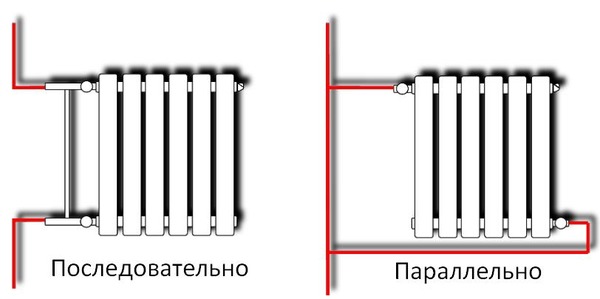
Photo 1. Diagrams demonstrating the principles of serial and parallel connection of heating pipes.
If you need to heat a large room or several rooms of the dacha at once, assemble parallel diagram. Each battery is connected two pipesHot water comes in through one, and cooled water returns to the boiler through the other.
Reference. These options are also called one-pipe and two-pipe systems.
Types of boilers
Boilers for heating a house are divided by type of fuel used:
- gas;
- electrical;
- solid fuel.
Attention! Often the boilers already have it built in circulation pumpIf the pump is purchased separately, it must be selected taking into account the pressure created by the boiler.
Pros and cons
Advantages water heating method for a summer house:

- Water - affordable and high-quality coolant.
- No dust rises.
- No noise during work or it is insignificant.
- With a two-pipe system there is the ability to regulate the temperature in each room.
Flaws:
- Difficulty of installation, especially for large houses.
- To prevent the pipes from bursting, you have to drain water or add antifreeze.
- Due to the content of impurities, the pipes are subject to corrosion, inside precipitation accumulates and over time the system's performance deteriorates.
- Possible leaks.
- Cold House heats up relatively slowly.
- It is being installedonly during construction or major repairs summer cottages.
Electrical
Electricity is used in apartment buildings as a supplement to water heating. And at the dacha it can become the main source of heat.
In addition to boilers that run on electricity, there are the following options:
- convectors and radiators;
- infrared heaters;
- warm floor.
Operating principle
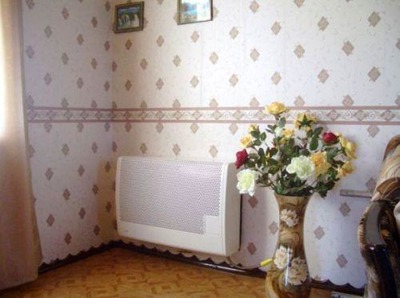
IN convectors, which run on electricity, the heating element heats the air, which comes out through the holes in the housing and spreads throughout the house, warming it.
Most often, such heating devices have fan, accelerating the movement of air.
Such devices work automatically. A certain temperature is set. When the sensors show that the air in the room has warmed up enough, the convector switches off.
By location They are divided into:
- floor;
- wall-mounted;
- underfloor.
Latest It is recommended to install under windows at home. The rising flow of warm air will prevent the penetration of cold air from the street.
In infrared heaters Electrical energy is also converted into heat, but the peculiarity is that it is not the air that is heated, but the objects at which the device is directed.
IN heated floors An electric cable or infrared film is laid. As a result, the entire surface is heated.
This type of home heating is comfortable and good for health, because the feet are warm. But it is not enough to fully heat the dacha, especially in winter.
Advantages and disadvantages
Heating a summer house with electricity is characterized by the following advantages:
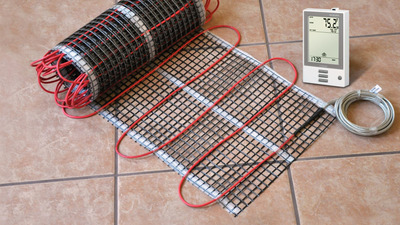
- Easy to install.
- No need for bulky equipment.
- No need receive permission (as when using gas).
- Fast heating summer cottages.
- Automatic heating operation.
- Most types (except underfloor heating) easy to connect in an already built house.
But they also have flaws:
- Using electricity costs expensive.
- In case of an accident the house will be left without heating.
- Tall load on wiring summer cottages.
- High power devices (and in summer cottage villages it is often limited).
Simple heating of a summer house: without gas and electricity
Heating your home with electricity expensive and unreliable. Using gas is cheaper, but connecting it it doesn't always work outThen you have to look for other options.
There are several modern alternative sources: energy from the sun, underground resources or a non-freezing reservoir. But their installation is quite expensive and complicated. Therefore, such a system is often chosen for a summer residence. traditional version, like stove heating.
Stove
It it has been known for quite some time, but remains relevant to this day. There are many variations of stoves. They are capable of heating the entire house or a separate room. Sometimes they are connected to a water heating system. Stoves not only heat, but also cook food.
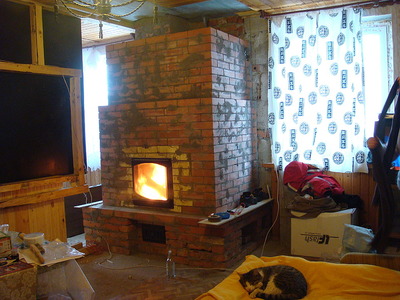
Fuel burns in the firebox. It heats the walls of the stove, which release heat into the house. The following materials are used:
- brick;
- cast iron;
- stainless steel.
Brick takes a long time to heat up, but it also gives off heat longer. To maintain a comfortable temperature at the dacha 1-2 heatings per day are required. Steel The ovens heat up quickly and cool down just as quickly. Cast iron They also heat up quickly, and in terms of heat transfer they occupy an intermediate place between other varieties.
The following are used as fuel:
- firewood;
- coal;
- pallets;
- fuel briquettes.
Pros and cons
TO advantages Heating a summer house with a stove includes:
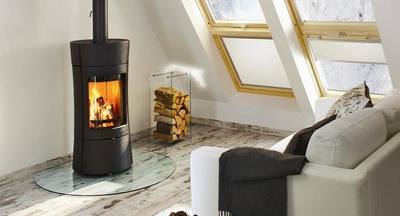
- Autonomy. No dependence on gas and electricity.
- Fits for houses, in which they do not live permanently.
- In the oven you can also cook.
There are such flaws:
- Required fuel storage space.
- Brick ovens quite massive, and it is advisable to lay them down together with the house.
- Less efficiency heating.
- If the water circuit is not connected, in the distant from the stove the rooms will be cooler.
- It is necessary to do chimney.
How to choose the right system
To make the right choice must be taken into account:
- accessible fuel;
- dimensions Houses;
- material, from which it is built;
- how often is it visited.
For a brick house
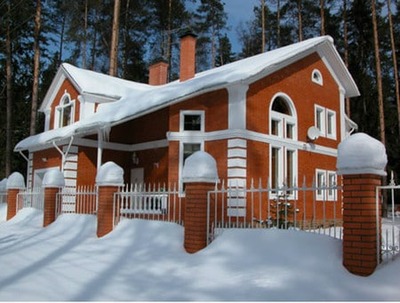
Brick walls absorb and then retain heat. The likelihood of occurrence fire at the same time, it is not high.
Therefore, it is better to use water or stove heating. The final choice depends on:
- is it let down to the house gas;
- prices for different types of fuel in this area.
For wooden building
At such a dacha It is not safe to heat the stove, since wood is a highly flammable material. In this case, it is better to opt for water heating. If the house is small and there are no interruptions electricity No, this will do too.
Useful video
Check out the video, which discusses the nuances of heating a summer house as opposed to heating a permanent residence.
What else does comfort depend on?
There are several options for heating a country house. But none of them will be effective enough, if the house not insulated.
Thermal insulation cover the walls, floor and roof (or ceiling). The thickness of the layer depends on the chosen material and the area in which the dacha is located. It is also important plug the cracks in windows, door frames.






































